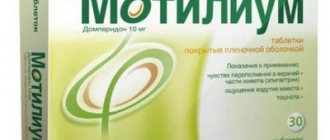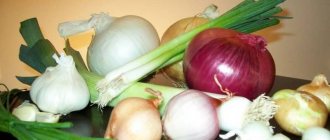How to choose a vegetable?
Broccoli is essentially an edible flower. Therefore, when purchasing, it is important to find a vegetable that is ripe, but not overripe, and especially just beginning to bloom. This is not difficult to do.
- The vegetable reaches commercial maturity in late summer and early autumn. The broccoli that appeared on the shelves later was either frozen or overripe.
- The vegetable that is suitable for use has compact, tightly closed inflorescences of a dark green, even color. If the inflorescences have acquired a yellowish-green tint, it means the cabbage is overripe.
- Preference is given to heads with thin stems and leaves. Thick and hard stems indicate that the broccoli was removed from the garden too late.
- The inflorescence is separated with some difficulty, the pulp of the stem is juicy but dense. A head that is too loose indicates long-term storage of cabbage in unsuitable conditions.
- Broccoli has a rather weak, herbaceous odor. If you notice dampness in the smell, you should refuse the purchase: the cabbage was frozen in violation of the technology, and it will quickly spoil.
How to choose and store correctly
The first rule for choosing broccoli is the same as when buying other vegetables. The cabbage should be free of bruises, rot and stains, the stem should be firm and of the same color.
The color of the vegetable can vary depending on the variety from bright green to purple-green. Under no circumstances should you take vegetables that have yellow flowers: this is a sign of overripeness. If leaves are attached to the inflorescence, they should be fresh and bright, not wilted.
It is easy to keep the vegetable fresh if you place it in a plastic bag without air and put it in the refrigerator. In this form it can be stored for up to 10 days. You should not wash broccoli before storing: water will speed up the spoilage of the product. Pre-blanched vegetables can be frozen and stored for several months. But it is important to use boiled broccoli within 1-2 days.
Contraindications for use
Although the vegetable is extremely neutral and a hypoallergenic product, it is prohibited to use it for certain pathologies:
- individual intolerance to any substances in cabbage is rare;
- gout – broccoli contains purines, and eating foods high in purines is prohibited for this disease;
- acute pathologies of the pancreas.
Excessive consumption of broccoli, especially in its raw form, provokes gas formation, nausea, and diarrhea.
general characteristics
Broccoli belongs to the cruciferous family, and its closest relatives are various types of cabbage, including cauliflower, cabbage, and Brussels sprouts. It is believed that the ancient Romans were the first to notice the benefits of this cabbage, when the wild “progenitor” of the vegetable populated the shores of the Mediterranean Sea.
Content:
- general characteristics
- Health Benefits
- Broccoli: benefits and harm for humans
- Nutritional Components
- Possible side effects
- How to choose and store correctly
- How to cook broccoli properly
Many people reject this vegetable because of its spicy-bitter taste, which broccoli gets from the sulfur it contains. Meanwhile, it is sulfur and other important components that make this amazing cabbage one of the most useful.
How to cook broccoli deliciously?
For gastritis, broccoli should not be consumed raw, since the unprocessed fiber of the vegetable irritates the gastric mucosa. This aggravates the patient's condition. But you also need to prepare cabbage in a special way:
- Steamed broccoli is the best option. The vegetable retains a maximum of vitamins and microelements, dietary fiber is partially destroyed, starch is hydrolyzed. The taste of cabbage remains mild and neutral. Easily combines with any types of other vegetables, cereals and meats. They do not cook for long: to get soft melting pulp, boil for 12 minutes, al dente - 5-7 minutes;
- boiled in water - slightly worse in composition, as it loses water-soluble vitamins. It should be cooked for a minimum time of 15–20 minutes. The taste is more diffuse, watery;
- The taste of stewed cabbage is determined by the added spices. With gastritis, the choice is small, since spices irritate the mucous membrane. You can diversify the flavor palette using mild sauces;
- baked broccoli - usually as part of a casserole, since the vegetable itself has too little flavor. With this processing, the calorie content of the product increases, as it loses moisture;
- frying is allowed only at the stage of remission. The inflorescences are first boiled and fried in egg or batter, only to change the taste. In acute and severe chronic gastritis, frying is excluded. Even to boiled cabbage, oil is added with great care.
Important! The longer the heat treatment lasts, the more the vegetable loses vitamins and microelements.
Broccoli: benefits and harm for humans
Vegetables are very beneficial for human health, and broccoli is no exception. By consuming it, a person receives dozens, if not hundreds, of extremely useful components. Here are just a few of these benefits [2][3][4].
Protects against cancer
Sulforaphane, which has already been mentioned, is capable of destroying cancer stem cells [5]. This means that the named substance, which is part of this amazing cabbage, destroys malignant tumors at the root. Another chemical compound, glucoraphanin, activates enzymatic processes in cells, resulting in increased protection against carcinogens.
Researchers have discovered that sulforaphane normalizes DNA methylation (making it possible for a methyl group to attach to a DNA molecule), and gene formation depends on this process [6]. On the other hand, DNA methylation makes it possible to suppress unwanted genes. Abnormal DNA methylation almost always plays a key role in the development of all types of cancer. Scientists say that eating broccoli 4 times a week prevents prostate cancer. In addition, researchers found many positive changes in the body among male broccoli lovers. In addition to prostate cancer, cabbage prevents cancer of the breast, uterus and internal organs (lungs, liver, colon, kidneys). For the female body, this vegetable is useful as a product that removes excess estrogen.
Meanwhile, the anti-cancer properties of broccoli are determined not only by glucoraphanin, but also by selenium, beta-carotene, potassium, zinc, some amino acids, as well as antioxidant vitamins: A, E, C.
Good for the kidneys
The components contained in the vegetable can improve blood supply to the kidneys, and therefore activate the functions of this organ. Scientists confirmed this assumption during an experiment on laboratory rats.
Protects the heart
In addition to antioxidants and fiber, broccoli is rich in many vitamins, minerals and fatty acids, which, working comprehensively, regulate cholesterol levels, stabilize blood pressure, which benefits the heart.
The potassium contained in the vegetable is known for its vasodilating properties, which improves blood flow to the heart and fills vital organs with oxygen.
Strengthens immunity
The antioxidant properties of broccoli also stimulate the body's defense functions. Specifically, when released into the human body, the chemicals in cabbage reduce oxidative stress and prevent the weakening of the immune system that occurs over the years. In this case, we can say that broccoli also slows down the processes caused by aging [7].
Improves the condition of the digestive organs
It is also interesting that raw young broccoli sprouts improve the condition of the stomach, in particular, have a beneficial effect on its mucous membrane. Many stomach problems are associated with the spread of the bacterium Helicobacter pylori, including on the inner wall. Raw broccoli sprouts contain substances that regulate the growth of these unwanted bacteria.
In addition, broccoli fiber prevents many digestive disorders, improves intestinal motility, and magnesium and a vitamin complex regulate stomach acidity, promoting proper digestion of food.
Prevents arthritis
Recent tests on laboratory mouse cells have shown that broccoli, rich in sulfur compounds, blocks the production of a key enzyme that causes cartilage breakdown. It is believed that increasing your diet with broccoli will help slow (and in some cases prevent) osteoarthritis.
Improves vision
The vitamin complex, as well as beneficial substances contained in broccoli (including zeaxanthin), make this vegetable beneficial for eye health. The healing components of this wonderful cabbage protect against macular degeneration of the eyes, cataracts, as well as the harmful effects of UV radiation.
Detoxifies
Sulfur, vitamin C and certain amino acids make broccoli an important detoxifying food for the body. This type of cabbage is suitable for a cleansing diet that removes toxins, free radicals, and cleanses excess uric acid from the body. The result of this effect is a reduction in the risk of developing gout, arthritis, rheumatism, skin diseases, as well as the formation of kidney stones, rashes and boils.
Important for the skin
Maintaining youthful and fresh skin directly depends on the presence of antioxidants in the diet, such as beta-carotene, vitamins A, B, C, E, K, Omega substances. All of these elements are fully represented in young broccoli. That's why lovers of this vegetable don't have to worry about possible early skin aging. In addition, some of the phytonutrients found in the vegetable protect against the negative effects of sun rays on the skin.
Necessary for pregnant women
Since broccoli is rich in many nutrients, it is essential for pregnant women. The presence of this vegetable in the diet provides the expectant mother’s body with proteins, calcium, phosphorus, iron, vitamins, antioxidants, and fiber. Folic acid protects the unborn child from congenital pathologies, including those related to the functionality of the central nervous system.
Important for treating anemia
Lack of iron and protein usually causes anemia. Broccoli is rich in both substances, hence it can be considered an anti-anaemia vegetable. Regular consumption of cabbage improves general condition, blood flow and oxygen supply to organs, which is necessary for the proper functioning of all systems. In addition to these components, broccoli contains copper, a mineral that, along with iron, is responsible for the production of red blood cells.
Dietary recipes with broccoli for gastritis
A wide variety of broccoli dishes are prepared. However, with different forms of the disease - with high acidity, low acidity - you are allowed to eat different amounts of cabbage and in different forms.
- A popular broccoli recipe is puree soup. 4-5 cabbage inflorescences are separated from the stems and simmered in water for no more than 5 minutes. 1 boiled potato and 100 g of boiled chicken breast, cut into small pieces. Then all ingredients are crushed in a blender. Cream and water in which the cabbage was boiled are added to the finished mixture. The soup can be seasoned.
- For high acidity, broccoli and cauliflower soup is beneficial. A weak broth is made from 300 g of veal. Then the meat is removed, and the prepared 100 g of bulgur is placed in the pan. After 10 minutes, a small carrot, an onion and 300 g of broccoli and cauliflower are sent there. The soup is simmered over low heat for 15 minutes. At the very end, add the veal, disassembled into fibers, and after turning off, season the soup with a spoon of vegetable oil.
- A very simple tasty dish - cabbage with cheese. Boil or steam the inflorescences for no more than 10 minutes - the cabbage should retain a dark green color. Place the broccoli on a plate and sprinkle grated cheese on top - hard or melted as desired.
- Broccoli is baked like this: disassemble the head into florets, sprinkle with oil, place on a baking sheet and bake in the oven for about 10 minutes. You can also sprinkle the dish with cheese and leave it in the oven for another minute to melt the cheese.
- Italian cutlets are quite suitable for gastritis with high acidity. Boil 200 g of broccoli, mix with 1 egg and grind in a blender. Then add 600 g of minced meat, chopped onion, salt, pepper and a tablespoon of low-fat sour cream to the mixture. Cutlets are formed from the mass and steamed.
Another option: mix all the ingredients except cabbage, and put a whole boiled inflorescence inside each cutlet.
- Carponata includes vinegar. This is a rather risky product for gastritis, so this dish is prepared during remission. Cut red onion, 2 tomatoes, 1 bell pepper into pieces and cook for 20 minutes. Then add capers, 250 broccoli, and a teaspoon each of tomato paste and wine vinegar and cook for another 5 minutes. Carponata is served cold.
- Omelette with cabbage is a source of protein. The dish is included in the diet for functional dyspepsia at any stage. 200 g of broccoli are disassembled into inflorescences and boiled for 10 minutes. Beat 2 eggs with 100 ml of milk and a tablespoon of soy sauce. Place the cabbage in a baking dish and pour the mixture over it. You can add chopped tomato. Bake the omelette for 5 minutes.
- An interesting option is a smoothie, or “liquid salad”. It is prepared like this: boil 200 inflorescences for 2-3 minutes, cool and mix in a blender with 200 ml of low-fat yogurt. Add salt and pepper for taste.
Important! Since spices are prohibited for gastritis, the dish is flavored with lemon juice, mustard seeds and dill.
Nutritional Components
Broccoli is an excellent source of vitamins K, C, folic acid and chromium. This vegetable contains a lot of fiber and proteins, vitamins B, A, E, as well as manganese, phosphorus, choline, potassium, copper, selenium, Omega-3 fatty acids and beneficial phytonutrients. In addition to all this, the vegetable contains virtually no calories, since almost 9/10 consists of water.
Vitamin K contained in cabbage is necessary for proper blood clotting and protein formation. Folic acid is responsible for the production of new cells in the body, and vitamin C creates collagen, an essential component of bones, cartilage and skin. In addition, ascorbic acid is known to be one of the most powerful antioxidants.
Among the most beneficial phytonutrients contained in this type of cabbage are sulforaphane (prevents cancer), carotenoids (improves vision), kaempferol (protects against cardiovascular diseases, inflammation, allergies, cancer), quercetin (important for hypertensive patients) [8].
Nutritional value per 100 g [9][10]
| Calorie content | 34 kcal |
| Water | 89 g |
| Squirrels | 2.8 g |
| Fats | 0.04 g |
| Carbohydrates | 6.6 g |
| Vitamin A | 31.2 mcg |
| Vitamin C | 89.3 mg |
| Vitamin E | 0.77 mg |
| Vitamin K | 101.4 mcg |
| Vitamin B1 | 0.08 mg |
| Vitamin B2 | 0.13 mg |
| Vitamin B3 | 0.65 mg |
| Vitamin B5 | 0.55 mg |
| Vitamin B6 | 0.21 mg |
| Folic acid | 63 mcg |
| Kholin | 18.7 mg |
| Calcium | 46.3 mg |
| Iron | 0.74 mg |
| Magnesium | 22 mg |
| Phosphorus | 68 mg |
| Potassium | 315 mg |
| Sodium | 34 mg |
| Zinc | 0.42 mg |
| Copper | 0.06 mg |
| Manganese | 0.22 mg |
| Selenium | 2.6 mcg |
Application
The vegetable does not have pronounced medicinal properties. Its use alleviates the condition of patients with low acidity. For gastritis with high acidity, broccoli is included in the diet in smaller quantities: cabbage activates the secretion of the stomach, and with high acidity this is harmful.
Cabbage juice for gastritis
Although it is prohibited to eat broccoli raw, the juice from the plant is used to treat gastritis. The concentration of ascorbic acid and other vitamins in the juice is maximum, that is, this drink has pronounced anti-inflammatory properties.
At the first symptoms of gastritis and dyspepsia - heaviness and pain in the stomach, it is recommended to drink ½ glass. Within 5 minutes the symptoms disappear. The juice also relieves heartburn, which often accompanies the disease.
Important! For the juice to have its effect, it cannot be salted.
With increased acidity
Broccoli is useful for gastritis with high acidity because the vegetable to some extent suppresses the reproduction and action of the Helicobacter pylori bacillus. On the other hand, asparagus cabbage activates the production of gastric secretions. With reduced secretion, this property acts as an advantage. With high acidity, the opposite is true: secretion here is already high, so it is advisable to eat dishes with broccoli, but in limited quantities.
The recommendations are as follows:
- Broccoli can only be eaten boiled. With this treatment, dietary fiber is partially waterproofed and does not stimulate gastric secretion;
- It is better to use asparagus cabbage in grated form, this reduces the mechanical load on the organ;
- hot food irritates the stomach, cold food takes too long to digest. Broccoli is consumed warm – up to +40 C.
With low acidity
With this diagnosis, it is recommended to include in the diet dishes that stimulate the production of gastric juice and food enzymes. Broccoli is one of them.
The recommendations are:
- Preferably stewed and baked cabbage. Salt and spices should not be added during exacerbation;
- broccoli is combined with lean meat and dairy products;
- To improve the taste of dishes, add parsley, dill, celery, mustard seeds, and flax seeds.
Broccoli for gastritis is included in the patient’s daily diet. Asparagus cabbage activates the production of gastric juice, enhances intestinal motility, and does not irritate the mucous membranes. With low acidity, it is recommended to eat at least 250 g of the product per day. With high acidity, broccoli is consumed to reduce inflammation and get rid of heartburn.
Health Benefits
Broccoli is rich in many nutrients and is among the leaders in antioxidant content. However, it is important to know: heat treatment destroys some of them. Interestingly, the raw vegetable contains almost twice as much vitamin C as oranges, and about as much calcium as milk. The presence of selenium in this cabbage makes it an effective antiviral and anticancer product.
As a result of more than three hundred scientific studies, scientists have identified the most important benefits of the vegetable. Broccoli is useful for chronic inflammation, for cleansing the body and preventing oxidative processes. Eating broccoli increases the body's ability to eliminate carcinogens and oxidants obtained with food or entering the body by airborne droplets. Scientists, after a series of experiments, claim that the vegetable has these properties thanks to the phytochemical substance sulforaphane [1]. In addition, many studies have proven the ability of green-purple cabbage to prevent cancer. At the same time, scientists emphasize: the bioavailability (ability to be absorbed into the system) of isothiocyanates (phytochemicals or chemicals contained in plants) from fresh vegetables is almost 3 times more effective than in boiled ones. Another interesting study confirms the importance of consuming cruciferous vegetables (including broccoli) in preventing DNA damage. The list of health benefits doesn't end there. Below we will consider in more detail the effect of this plant on the organs and systems of the human body.
How is broccoli different from regular cabbage?
Not long ago, scientists identified the main reason why millions of people in the world suffer from gastritis and ulcers. This is Helicobacter pylori - a very insidious bacterium. It enters our body through dishes and unwashed hands. It is not easy to completely get rid of a microorganism. But if Helicobacter was identified at an early stage of the disease, the likelihood of quick treatment increases.
Along with the pills, a strict diet is prescribed. Regular cabbage for gastritis is completely excluded from the diet. But the situation with broccoli is very interesting. This vegetable is recommended for consumption.
Firstly, it is in no way inferior to white cabbage in composition. Secondly, it has a beneficial effect on the mucous membrane. And after 3 days the patient’s condition improves.











